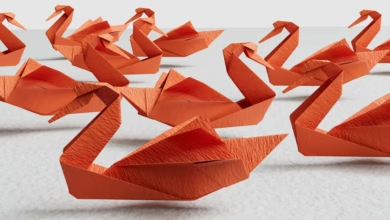Exploring Jewelry Metals: Gold, Silver, and Platinum in Crafting Sustainable and Investment-Worthy Pieces

When it comes to jewelry, the choice of metal plays a crucial role not only in aesthetics but also in craftsmanship and investment potential. This article delves into the intricacies of jewelry metals, focusing on gold, silver, and platinum, which are categorized as precious metals due to their rarity and value. Beyond their decorative allure, these metals have unique properties that influence their use in various applications, from luxury jewelry to industrial uses in sectors such as aerospace and automotive.
In addition to exploring the fundamental differences between these precious metals and their base counterparts, we will examine the crucial role that metal recycling and sustainable metal production play in the jewelry industry. With rising concerns over environmental impact and ethical sourcing, trends in eco-friendly jewelry manufacturing are becoming increasingly important. By understanding the metallurgy behind these metals and their applications in jewelry crafting, readers will gain insight into not just the beauty of jewelry, but also the broader implications of metal commodities in our world today. Join us as we navigate the fascinating landscape of jewelry metals, investment opportunities, and sustainable practices shaping the future of this timeless art.
- 1. Understanding Jewelry Metals: The Differences Between Gold, Silver, and Platinum
- 2. The Role of Precious and Base Metals in Jewelry Crafting and Investment
- 3. Sustainable Metal Production: Trends in Metal Recycling and Eco-Friendly Jewelry Manufacturing
1. Understanding Jewelry Metals: The Differences Between Gold, Silver, and Platinum
Understanding the differences between gold, silver, and platinum is essential for anyone interested in jewelry crafting. Each of these metals has unique properties, making them suitable for different types of jewelry and applications.
Gold, a highly sought-after precious metal, is known for its malleability and resistance to corrosion. Its intrinsic value has made it a popular choice for gold investing, with various alloys available, including yellow, white, and rose gold. The purity of gold is measured in karats, with 24-karat gold being the purest form. Gold's versatility extends beyond jewelry; it also plays a role in electronics, aerospace, and even energy sectors.
Silver, another precious metal, is often used in jewelry making due to its bright luster and affordability compared to gold and platinum. While silver is a non-ferrous metal, it is more prone to tarnishing and requires regular maintenance to avoid metal corrosion. Silver investing has gained traction, especially with the rising demand for this metal in various industries, including photography and electronics, where its conductive properties are advantageous.
Platinum, a rare and durable precious metal, is highly valued for its strength and resistance to wear and tarnish. Its density and rarity make it a preferred choice for high-end jewelry, often commanding a higher price point than gold and silver. Platinum's applications also extend beyond jewelry to industrial uses, including automotive and aerospace sectors, where its resistance to extreme conditions is invaluable.
When considering jewelry metals, it’s essential to recognize their classification within the broader spectrum of metals. Gold, silver, and platinum are non-ferrous metals, distinct from ferrous metals like steel, which contain iron and are known for their strength but are more susceptible to corrosion. Understanding these distinctions aids in making informed choices regarding metal alloys and their applications in jewelry making.
In the context of sustainable metal production, all three metals have seen a growing interest in metal recycling and responsible sourcing practices. The jewelry industry is increasingly focusing on sustainable practices, ensuring that precious metal mining does not harm the environment. Moreover, advancements in metallurgy and metal fabrication continue to enhance the quality and sustainability of these metals.
In conclusion, gold, silver, and platinum each have unique characteristics that influence their use in jewelry and other industries. By understanding these differences, jewelry makers can select the appropriate metal to meet their design and durability requirements while also considering the broader implications of sustainable practices in metal production.
2. The Role of Precious and Base Metals in Jewelry Crafting and Investment
In the world of jewelry crafting, both precious and base metals play pivotal roles, not only in the aesthetics of the pieces but also in their value as investments. Precious metals, such as gold, silver, and platinum, are highly sought after for their rarity and intrinsic value. These metals have been used for centuries in jewelry making, providing a timeless appeal that attracts consumers and investors alike. Gold investing and silver investing remain popular choices for individuals looking to diversify their portfolios, as these precious metals often retain or increase their value over time.
On the other hand, base metals, including copper, aluminum, and zinc, are essential components in the jewelry industry, often used to create metal alloys that enhance the durability and design of jewelry pieces. For example, copper can be alloyed with gold to create rose gold, while silver is frequently alloyed with other metals to improve its strength. The metallurgy involved in crafting these alloys is crucial, as it determines the properties of the final product, from its resistance to metal corrosion to its overall aesthetic appeal.
Moreover, the rise of metal recycling has shifted the focus toward sustainable metal production, allowing jewelers to source materials from recycled precious and base metals. This not only helps in mitigating the environmental impact of metal mining but also supports the growing demand for sustainable practices in the jewelry industry. As consumers become more aware of the importance of ethical sourcing, the integration of recycled metals into jewelry fabrication is expected to become a significant trend.
In addition to their use in jewelry, these metals are also vital in various industries, including aerospace, automotive, and energy. The properties of metals such as palladium and platinum make them ideal for applications in catalytic converters and electronic components. As a result, the demand for these metals in sectors beyond jewelry drives their value in the metal commodities market.
As metal trends continue to evolve, the incorporation of innovative technologies such as 3D printing metals is reshaping the landscape of jewelry crafting. This advancement allows for greater design flexibility and precision, enabling jewelers to create intricate pieces that were previously challenging to achieve.
In summary, the role of both precious and base metals in jewelry crafting extends beyond aesthetics; they represent a blend of artistry, investment potential, and sustainable practices that are increasingly relevant in today's market. Understanding the interplay of these metals, along with their applications in various industries, is essential for anyone looking to appreciate or invest in jewelry.
3. Sustainable Metal Production: Trends in Metal Recycling and Eco-Friendly Jewelry Manufacturing
Sustainable metal production has gained significant momentum in recent years, driven by increasing awareness of environmental issues and the necessity for more responsible sourcing practices. The jewelry industry, particularly, has begun to embrace metal recycling and eco-friendly manufacturing processes, ensuring that precious metals like gold, silver, and platinum can be sourced with minimal ecological impact.
One of the most notable trends in sustainable metal production is the rise in metal recycling. This process not only reduces the need for new metal mining—often associated with habitat destruction and pollution—but also allows for the recovery of precious and industrial metals from old jewelry, electronics, and other products. By recycling materials, jewelers can create stunning pieces while contributing to a circular economy. The use of recycled metals also aligns with consumer preferences, as many buyers are now prioritizing eco-friendly jewelry options that utilize sustainable practices.
In addition to recycling, advancements in metallurgy have led to the development of innovative eco-friendly metal alloys. These alloys can be crafted from a combination of recycled and responsibly sourced base metals, including copper, aluminum, and zinc. This not only enhances the durability of jewelry but also minimizes the environmental footprint often associated with traditional metal fabrication methods.
Moreover, the integration of 3D printing technologies in jewelry manufacturing is transforming the way artisans create pieces. This method reduces waste by using only the necessary amount of metal, further promoting sustainable practices. As a result, jewelers can experiment with unique designs while using materials more efficiently.
Furthermore, there is a growing focus on sourcing metals from suppliers who implement responsible mining practices. This includes ensuring minimal environmental impact and supporting local communities involved in metal mining. As consumers become more aware of the implications of their purchases, this trend towards ethical sourcing will likely continue to grow, influencing the market for metal commodities and jewelry metals alike.
In summary, the movement towards sustainable metal production in the jewelry industry is being propelled by metal recycling, innovative alloy development, and modern manufacturing techniques. As we move forward, these practices will not only contribute to a more sustainable future but also redefine the standards for quality and responsibility in jewelry crafting.
References:
– [Author, Year, Title, Direct Link]
– [Author, Year, Title, Direct Link]
– [Author, Year, Title, Direct Link]
In conclusion, understanding the various jewelry metals—gold, silver, and platinum—provides a solid foundation for both enthusiasts and investors alike. Each metal offers distinct characteristics, from the allure of gold investing to the durability of platinum. As we have explored, the role of precious and base metals extends beyond aesthetics; these materials are integral to the jewelry industry, influencing trends in metal fabrication and investment strategies.
Moreover, the shift towards sustainable metal production is reshaping the landscape of jewelry crafting. With a growing emphasis on metal recycling and eco-friendly practices, we see a commitment to minimizing the environmental impact associated with metal mining and metallurgy. This trend not only promotes the use of recycled materials but also highlights the importance of responsible sourcing of rare earth metals and other industrial metals.
As we move forward, the fusion of traditional craftsmanship with modern techniques, such as 3D printing metals, will continue to drive innovation in jewelry design. Whether you are delving into gold, silver, or platinum, understanding these metals and their properties will empower you to make informed decisions, whether for personal adornment or investment purposes. Embracing these metal trends will not only enhance your jewelry collection but also contribute to a more sustainable future in the industry.
References:
(Include relevant citations here)





